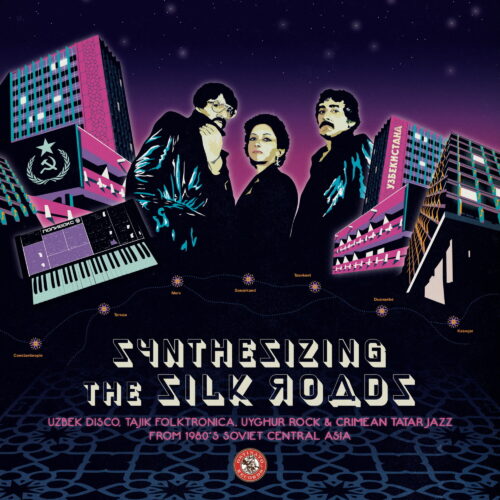Disco was the biggest driver of musical globalisation since rock’n’roll: A simple thing, enthusiastically received in most parts of the world, and reinterpreted according to local customs. What was true in Sweden, Italy, and Bavaria was also happening in Central Asia during the USSR era. With »Synthesizing the Silk Roads: Uzbek Disco, Tajik Folktronica, Uyghur Rock & Tatar Jazz from 1980s Soviet Central Asia,« the ever-reliant Ostinato label in collaboration with Uzbekistan’s Maqom Soul might have put out the most stunning disco compilation in recent years. It even—the title spells this out clearly—also has a lot more to offer than just takes on the four-to-the-floor formula invented in New York City two decades before. All 15 tracks were recorded in the Uzbek capital Tashkent, a focal point of the Soviet music industry due to being the home of the pressing plant Tashkentski Zavod as well as some scenesters with connections to the US and Japan, i.e. the ability to import some synthesizers and drum machines. These feature heavily throughout some of the tracks, of course. An early highlight on the compilation is Angelina Petrosova with a tune that brings together Italo Disco vibes with funky rock guitar—a veritable stand-out hit between many.
Khurmo Shirinova’s sound seems indebted to the Philly Sound-influenced strand of disco, while the three tracks by group Original fuse post-punk understatement with Italo Disco exuberance and some cosmic undertones for good measure, and Ismail Jalilov and his group Synthesis (sic!) moans and cries like an Uzbek Lee Moses. These artists brought their respective cultural backgrounds to disco, soul, and danceable rock music in all its facets as well as injecting every tune with resistant joy—a few of them ended up on the KGB’s watch list due to their activities. The Soviet Union is still regarded as a mostly uniform entity, with little attention being paid to the cultures of its member states that weren’t, you know, Russia. »Synthesizing the Silk Roads« might not be able to rectify this on a broader scale, but for those interested in learning more about the diversity of the USSR, it’s the best and most fun history lesson you could wish for.


